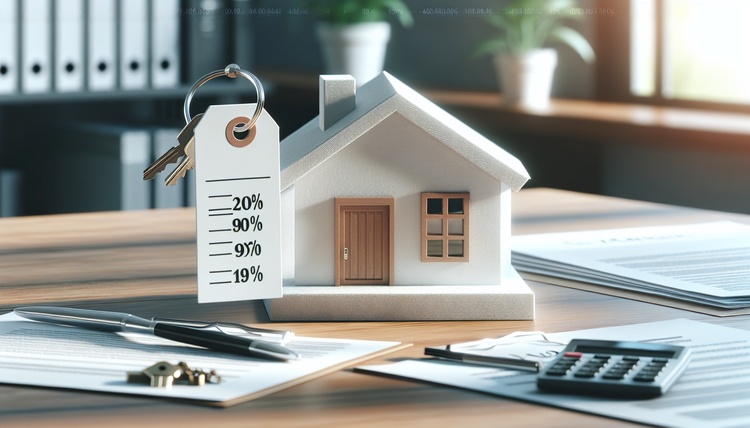What's Your Property Worth? Ultimate Valuation Guide
Discover how to determine your home's market value with clear explanations of the main drivers, valuation approaches, and tools. This guide covers location and condition influences, CMAs, appraisals, AVMs, when to check value, and practical upgrades to boost equity. Learn when to use online estimators and when to call a pro for accurate appraisals and pricing strategy.

What determines a home’s value?
A property’s worth is shaped by several interacting forces. Location is usually the most influential factor — closeness to reputable schools, public transit, major employers, and local amenities raises demand and often price. Broader market dynamics matter too: hot markets with strong buyer demand and limited listings push values up, while oversupply or economic slowdowns can depress prices. The home itself also plays a role: age, size, layout, structural condition, and recent upgrades affect buyer perceptions and appraisals. Finally, neighborhood shifts such as new development, zoning changes, or evolving buyer preferences can shift long-term value trends.
Common approaches to estimating value
There are multiple well-established ways to estimate what a house is worth. Each method has strengths depending on the property type and purpose.
Comparative Market Analysis (CMA): Real estate agents commonly prepare CMAs by comparing your home with recently sold nearby properties that are similar in size, age, and features. Adjustments are made for differences in condition or amenities. CMAs reflect current market sentiment and are practical for setting listing prices, but their accuracy depends on the quality of comparable sales and the agent’s judgement.
Cost approach: This technique computes how much it would cost to rebuild the structure today, subtracts depreciation, and then adds the land value. It’s especially useful for newer homes, new construction, or unique properties that lack close comparables.
Income approach: Used mainly for rental and investment properties, this method values a home based on expected rental income and capitalization rates. It’s less relevant for typical owner-occupied single-family residences but essential for investors evaluating returns.
Automated Valuation Models (AVMs) and online calculators: AVMs use public records, recent sales, and algorithms to produce fast estimates. They’re convenient for ballpark figures but can miss recent renovations, unique features, or subtle local market quirks.
Tools and professional resources
Online estimators: Many property websites offer free estimators that quickly generate rough values using tax records and recent sales. Treat these results as starting points, not final answers.
Real estate agents: Agents prepare CMAs, advise on pricing and marketing strategies, and help interpret local market signals. Their access to up-to-date sold data and neighborhood knowledge is valuable when you plan to buy or sell.
Licensed appraisers: Appraisers perform on-site inspections and produce formal reports that lenders rely on. Appraisals are comprehensive and impartial; they cost money but are the most dependable single-value assessment for lending and major financial decisions.
| Service | Typical Cost | Notes |
|---|---|---|
| Online estimate (AVM) | Free | Quick ballpark based on public records and recent sales |
| Real estate agent CMA | Often free | Market-driven estimate used to set listing price |
| Licensed appraisal | $300–$800+ | Thorough inspection and lender-approved report |
Costs are approximate and may vary by location, property complexity, and provider. Confirm fees with the service provider.
When should you check your home’s value?
Frequency depends on your objective. If you plan to sell within months, monitor local listings and sold prices every few weeks to months to time your listing for maximum return. For refinancing or home equity loans, check your value when mortgage rates shift or after significant improvements. If you aren’t planning to move, an annual review is usually sufficient to stay aware of equity changes and spot any sudden market swings that could affect taxes or insurance.
Practical ways to raise your home’s worth
Not all improvements deliver equal returns. Targeted, well-executed projects typically give the best payoff.
- Kitchen and bathroom updates: These areas often yield strong returns because they’re major decision points for buyers. Focus on functional upgrades and timeless finishes rather than ultra-high-end custom work.
- Curb appeal: Simple investments like landscaping, fresh exterior paint, a tidy lawn, and clean siding create strong first impressions.
- Systems upgrades: Replacing or repairing aging HVAC, plumbing, or electrical systems can ease buyer concerns and satisfy inspectors.
- Energy efficiency: Improved insulation, modern windows, or smart thermostats can boost appeal and reduce operating costs.
- Cosmetic refreshes: New hardware, lighting, and a fresh coat of paint are relatively low-cost ways to modernize interiors.
Before undertaking major renovations, research what buyers in your neighborhood value. In some markets modest, well-staged updates outperform expensive customizations.
Working with agents and appraisers
Agents and appraisers offer complementary services. Agents read market demand, recommend pricing and marketing strategies, and negotiate offers. Appraisers provide an independent, inspection-based valuation used by lenders. For high-stakes decisions — selling, refinancing, or tapping equity — use the appropriate professional. A common strategy is to start with online tools for context, obtain an agent’s CMA for listing strategy, and order an appraisal when a formal valuation is required.
Final thoughts
Estimating your home’s value combines data, professional insight, and local market knowledge. Use online estimates for quick context, rely on CMAs for pricing strategy, and request appraisals for formal financial steps. By keeping an eye on market trends, choosing cost-effective upgrades, and working with trusted professionals, you can make informed choices that protect and grow your property’s value.






